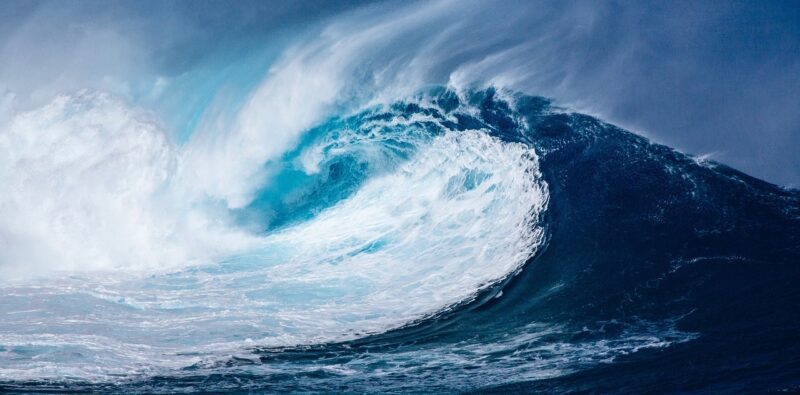The Mystery of Deep-Sea Vents: Where Unique Marine Life Thrives in Darkness
November 15, 2024

Deep-sea vents are one of the most fascinating natural phenomena on Earth, harboring unique ecosystems that thrive in total darkness. Situated on the ocean floor, these vents are openings in the Earth’s crust that spew out superheated, mineral-rich water. They challenge our understanding of biology and ecology, showcasing life forms that have adapted to extreme conditions unlike anything found on the surface. In this article, we will explore the science behind deep-sea vents, the incredible organisms that inhabit them, and their significance to our understanding of life on Earth and beyond.
1. What are Deep-Sea Vents?
Deep-sea vents, also known as hydrothermal vents, are formed by volcanic activity on the ocean floor. When seawater seeps into the Earth’s crust, it can be heated by geothermal energy and then expelled back into the ocean. This process creates exceptionally hot, mineral-laden water that can reach temperatures as high as 400°C (752°F).
The vents usually occur along mid-ocean ridges, where tectonic plates are diverging, and volcanic activity is prevalent. These environments were first discovered in 1977 during the research cruise of the submersible Alvin, and since then, scientists have been captivated by their unique characteristics.
2. The Unique Ecosystem of Deep-Sea Vents
The ecosystems around deep-sea vents are among the most extreme on Earth. The conditions are incredibly harsh: high pressures, extreme temperatures, and complete darkness. Despite this, these ecosystems teem with life, primarily due to the presence of chemosynthesis.
In contrast to photosynthesis, which relies on sunlight, chemosynthesis is a process where certain organisms convert chemical energy from minerals into organic matter. Key players in this ecosystem include:
- 1. Tube Worms: These iconic creatures can grow several feet long and are rich in hemoglobin, allowing them to transport oxygen efficiently. They have a symbiotic relationship with chemosynthetic bacteria, providing them with a suitable environment in exchange for nutrients.
- 2. Extremophile Bacteria: These microorganisms thrive in the extreme conditions of hydrothermal vents. They utilize hydrogen sulfide, a toxic compound, as their energy source, making them essential to the vent ecosystem’s food web.
- 3. Crustaceans and Other Invertebrates: Numerous species of shrimp, crabs, and other invertebrates have adapted to life near these vents. They feed on bacteria and organic matter, forming a crucial part of the ecosystem.
- 4. Fish: Some species of fish are also found in proximity to hydrothermal vents, where they prey on smaller invertebrates and utilize the unique habitat for spawning and feeding.
These organisms exhibit incredible adaptations to survive in such extreme environments, leading scientists to study them for insights into potential extremophiles on other celestial bodies like Europa or Enceladus, where water and chemical-rich environments may exist.
3. The Importance of Hydrothermal Vents to Science
Hydrothermal vents are significant for several reasons:
– Biodiversity and Evolution: The discovery of life thriving in complete darkness and extreme conditions reshapes our understanding of where and how life can exist. It raises fundamental questions about evolution and the potential for life beyond Earth.
– Climate Change Indicators: Deep-sea ecosystems offer vital data on ocean chemistry and help scientists understand the impact of climate change on marine environments.
– Biotechnology Potential: Organisms from extreme environments yield unique enzymes and compounds with potential applications in medicine and industry, inspiring biotechnological advancements.
– Resource Exploration: Hydrothermal vent systems can be rich in minerals and metals like gold, copper, and zinc. Understanding these ecosystems can lead to more sustainable practices for harvesting resources from the ocean floor without harming the delicate ecosystems.
4. Threats to Deep-Sea Vent Ecosystems
Despite their resilience, deep-sea vent ecosystems face numerous threats, largely attributable to human activities:
– Deep-Sea Mining: The growing interest in extracting minerals from the ocean floor poses a significant risk to these fragile ecosystems. It could lead to habitat destruction and loss of biodiversity before scientists have fully understood these unique systems.
– Climate Change: As ocean temperatures continue to rise, the conditions around hydrothermal vents may be altered, impacting the organisms that inhabit these areas and affecting overall biodiversity.
– Pollution: Marine pollution can have significant effects on deep-sea environments, disturbing the delicate balance of life found around hydrothermal vents.
5. Conclusion: The Wonders of Deep-Sea Vents
Deep-sea vents are extraordinary gifts of nature, demonstrating the adaptability of life in the harshest conditions on Earth. They challenge our understanding of biology and ecology and hold secrets that may one day unlock the mysteries of life’s origins in the universe. As we continue to explore these unique ecosystems, it becomes increasingly crucial to consider how we can protect them from the threats posed by our activities.
Sustainable practices in ocean resource management and a deeper respect for these extreme environments will be vital in ensuring that future generations can learn about and explore the wonders of deep-sea vents. The mysteries of these underwater ecosystems foster an ongoing sense of discovery and underscore the importance of preserving our planet’s most hidden treasures.








